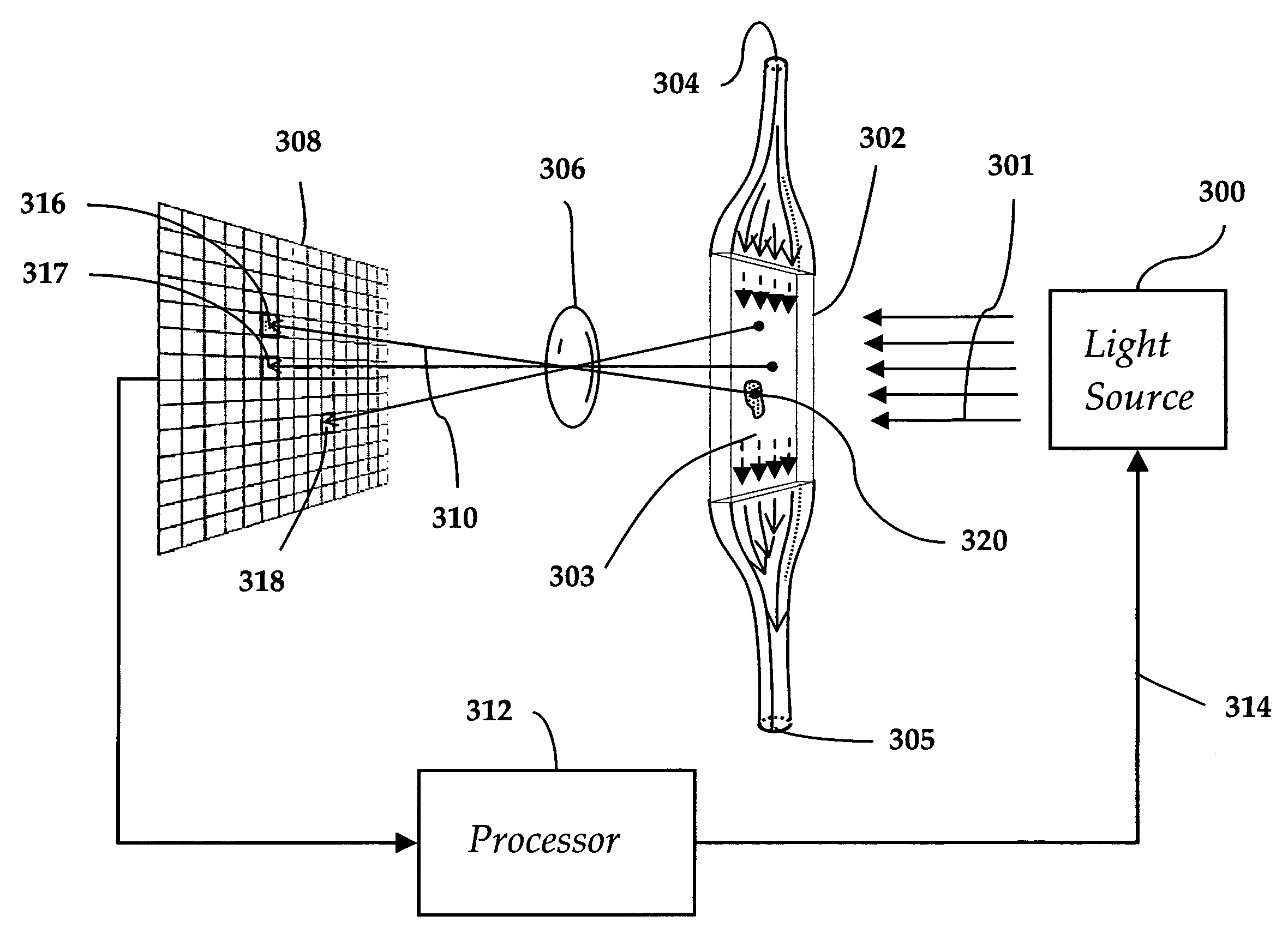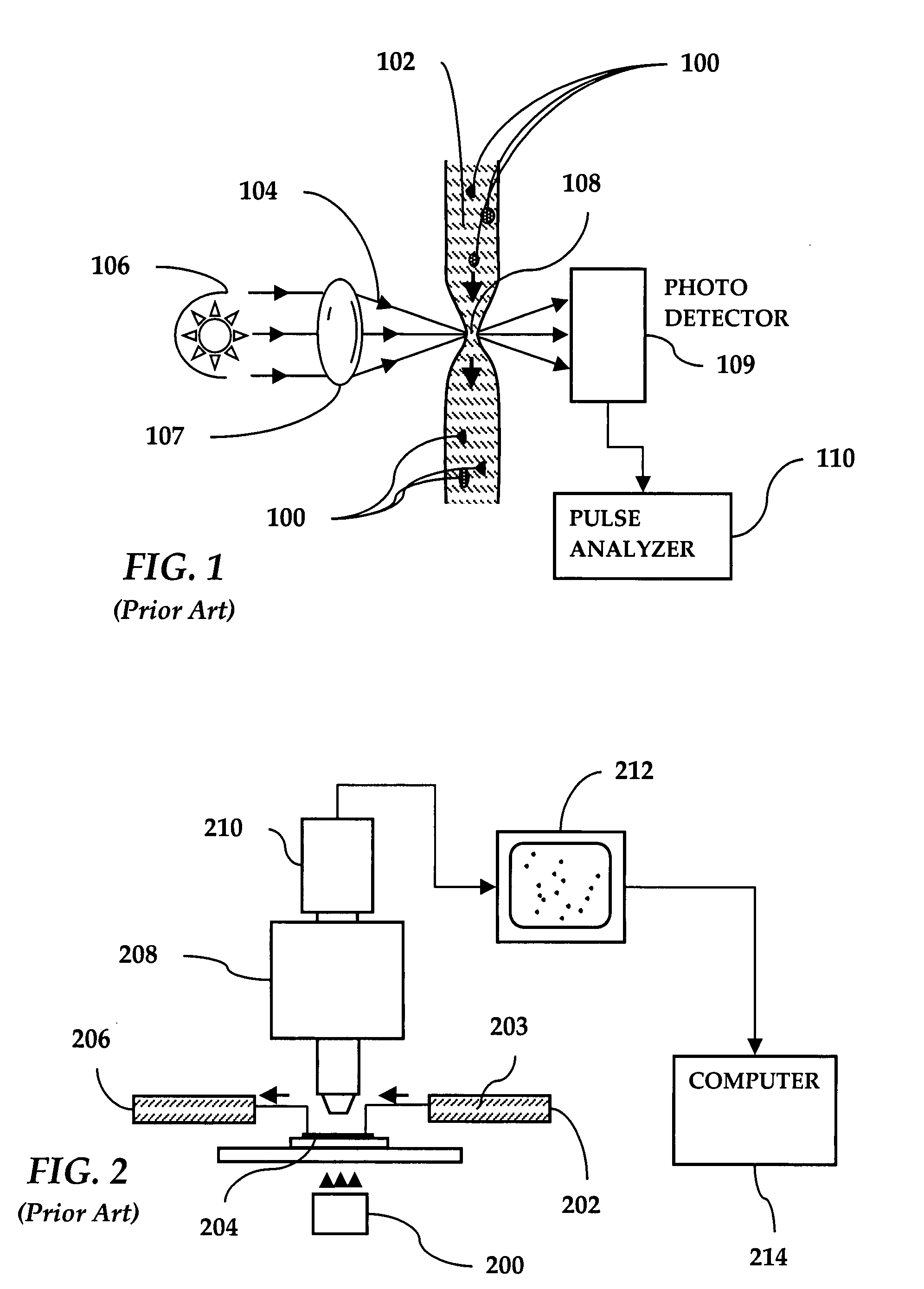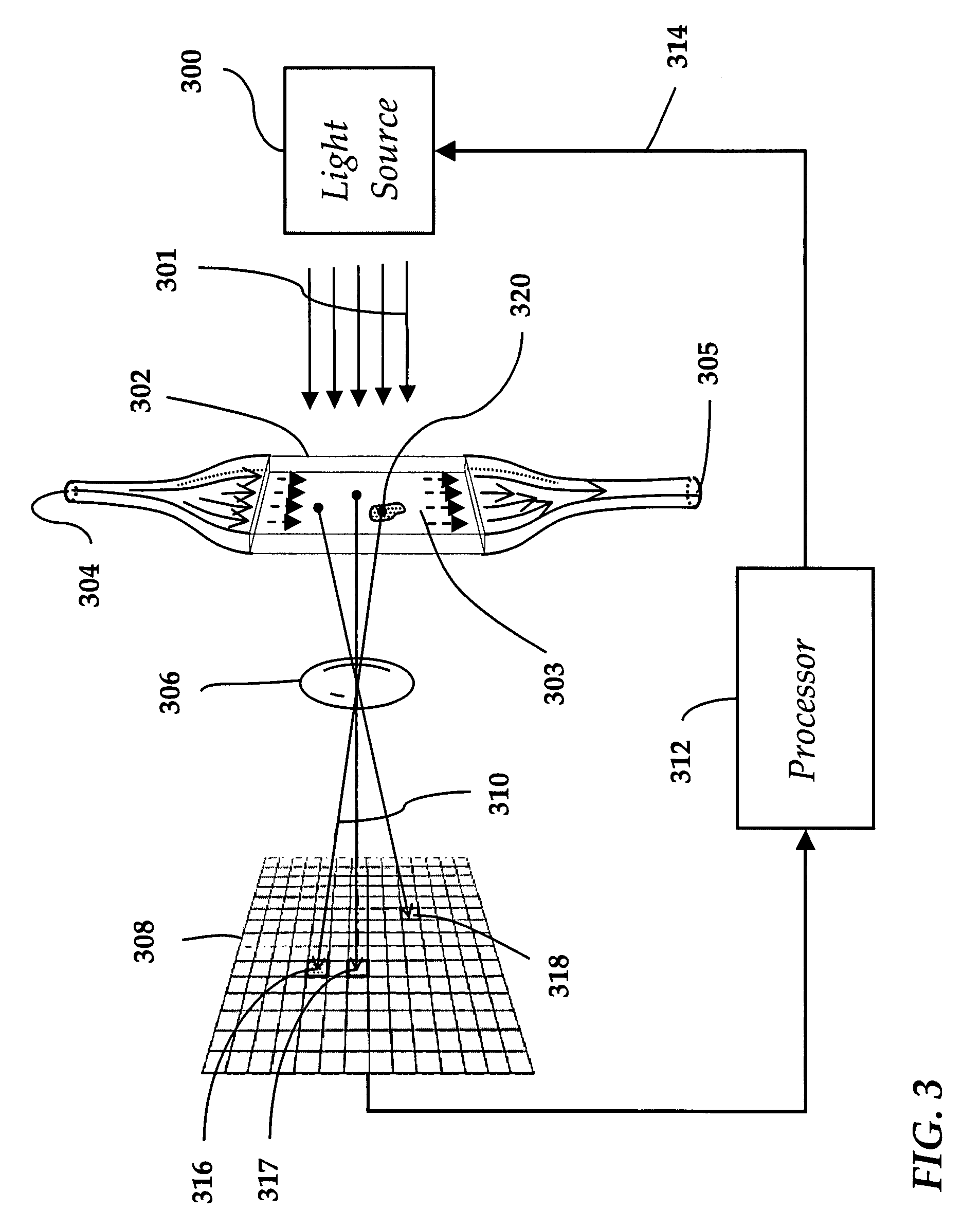Method and Apparatus for Analyzing Particles in a Fluid
a particle and fluid technology, applied in the field of particle analysis in fluids, can solve the problems of intravenous solution, light obscuration technique, adverse effects on patients,
- Summary
- Abstract
- Description
- Claims
- Application Information
AI Technical Summary
Benefits of technology
Problems solved by technology
Method used
Image
Examples
Embodiment Construction
[0032]Referring to FIG. 1, a prior art light obscuration apparatus is shown wherein particles 100 in a fluid 102 are arranged to pass, one by one, through a light beam 104 generated by a light source 106 and focused by a lens 107 onto a measurement area 108. A photodetector 109 is positioned to intercept the light beam 104. A pulse analyzer 110 is coupled to the photodetector 109.
[0033]When a particle 100 in a flowing fluid 102 transits the measurement area 108, the light beam 104 is obscured with a resulting change in signal strength at the photodetector 109. This signal change is picked and measured by the pulse analyzer 110. The signal change is then equated to a particle's equivalent circular diameter (ECD) based on a calibration curve created using polystyrene (PS) spheres of a known size. To the extent that particles in intravenous solutions are composed of different materials and are often far from spherical, errors in sizing and counting are unavoidable. Particles which are ...
PUM
| Property | Measurement | Unit |
|---|---|---|
| width | aaaaa | aaaaa |
| width | aaaaa | aaaaa |
| width | aaaaa | aaaaa |
Abstract
Description
Claims
Application Information
 Login to View More
Login to View More - R&D
- Intellectual Property
- Life Sciences
- Materials
- Tech Scout
- Unparalleled Data Quality
- Higher Quality Content
- 60% Fewer Hallucinations
Browse by: Latest US Patents, China's latest patents, Technical Efficacy Thesaurus, Application Domain, Technology Topic, Popular Technical Reports.
© 2025 PatSnap. All rights reserved.Legal|Privacy policy|Modern Slavery Act Transparency Statement|Sitemap|About US| Contact US: help@patsnap.com



